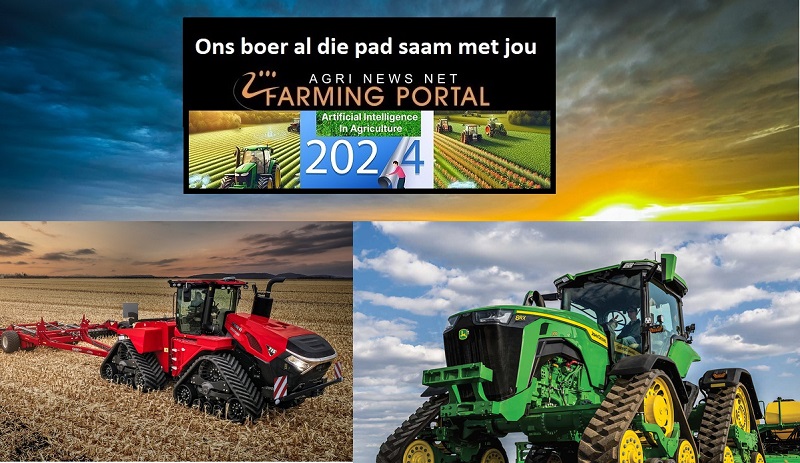Wineries across the globe have embraced artificial intelligence (AI) as a game-changing tool in all the stages of winemaking — from controlling the production in the vineyards to managing bottling plants — and it’s making a difference in the wine you buy and drink.
Why Are We Still Describing Wine As Old World or New World?
In many wineries, AI tools now help to guide decision-making, budget more effectively, and mitigate the impacts of climate change. For wine drinkers, this can mean a more accessible, sustainable, and higher-quality product.
How wineries across the globe are employing artificial intelligence
In California's Napa Valley, Gamble Family Vineyards has invested in tractors that use vision-based AI technology. The vehicle has a 360-degree camera and sensors that analyze the crop daily, which helps the vineyard make real-time adjustments and provide long-term yield estimates.
In Australia, Rathbone Group's vineyard, Mount Langi Ghiran, has implemented an AI-powered solution to monitor water levels and cropping forecasts. The data allows winemakers to plan more precisely the use of equipment and transport.
Across the globe in the Southern Hemisphere, Chile's Viña Concha y Toro, Latin America's leading wine producer, is using AI-based tools for more accurate yield estimation and to collect information about its grapes.
One of the main challenges in the wine industry is estimating yields in a specific vineyard in advance, as winemakers have to make essential decisions a few months before harvest.
Concha y Toro has been using AI tools to predict the volume of grapes they will have in a specific season, considering different variables, including climate, humidity, radiation, and wind. This helps to reduce the impact of climate change.
In the future, AI's role will likely evolve and include yield mapping, allowing growers to understand the variability within the vineyard in relatable terms.
“Accurate yield forecasting is a bit of a holy grail,” says Damien Sheehan, general manager and viticulturist of Mount Langi Ghiran, in Australia's Grampians region. “The value of accurate forecasting is more than just knowing how much wine you are about to produce, it impacts the amount of oak you require, it reduces waste, and allows for responsible purchasing of products without any last-minute scrambles.”
 Can the wine industry adapt to the ‘lifestyle generations’?
Can the wine industry adapt to the ‘lifestyle generations’?
Accurate forecasting allows winemakers to use their resources wisely. There are specific periods when a winery can run out of fermentation space, and this can be avoided with more precise information about the volumes of fruit to expect throughout the vintage. This kind of precise forecasting can improve the quality outcomes for each parcel of fruit.
AI tools also assist in managing natural resources with irrigation scheduling, defining when to do it and the amount of water necessary. It makes irrigation more effective and helps to avoid over-watering.
“The next manager that comes along here will possibly be an AI native, where these skills are just part of the norm of good agricultural management." — Damien Sheehan, general manager and viticulturist, Mount Langi Ghiran
“AI will accurately diagnose important fungal diseases from tractor-mounted cameras, allowing for better-timed crop protection responses,” says Sheehan. “AI will tell you if you need to shoot thin or crop thin by how much and exactly where.”
Grape quality is crucial to producing a fine wine, and the fruits are classified based on their levels of tannins and antioxidants. Wineries are using AI-based platforms to collect information from the fruits. With a batch of grapes, the AI can simulate fermentation, the winemaking process, and the value of compounds found on the grape's seeds and skin.
“You put an extract of the grapes [in an AI-based tool], and it gives you a lot of data,” says Alvaro González, director of Viña Concha y Toro's Centre for Research and Innovation. “The AI model can tell you if this batch of grapes is premium, super-premium, or ultra-premium. Why is it premium? Because it has a lot of tannins, analytic compounds, and antioxidants,” he says. “So, this batch can go to the premium line of winemaking.”
AI models are also present in Concha y Toro's bottling plants, which help predict failures before they happen. In the past, they had to stop production to do complete maintenance, which could take a whole week and directly impact productivity. Today, they can focus on single parts and mitigate the productivity loss.
Will AI replace the human touch?
People working in agriculture today are more tech-savvy than previous generations. Yet, it doesn't mean technology will replace direct contact with vineyards.
“The next manager that comes along here will possibly be an AI native, where these skills are just part of the norm of good agricultural management," says Sheehan. “At the same time, it is still about making informed decisions, and that requires knowledge, data, intuition but also experience. People will still need to be in touch with their vines and the vagaries of their vineyard to properly make informed decisions.”
While much discussion exists about AI taking over jobs in different fields, wine producers agree that human skills will remain crucial in making fine wine. So, while the innovations will optimize the process, they won't replace people.
“It's good to have new tools and information based on AI to make the winemaker's life easier,” says González. “In the end, the winemakers have more time to do their main job, which is to smell the product, taste the grapes, make good decisions in the winemaking, and then, by sensory analysis, do the blendings to have good products in [their] portfolio.”















